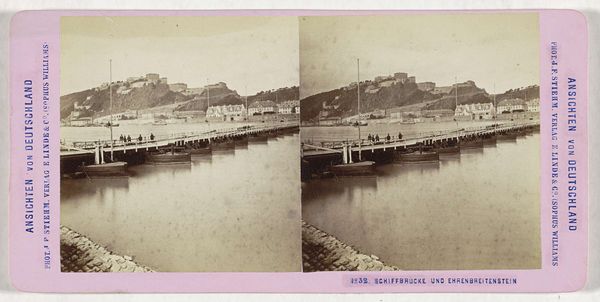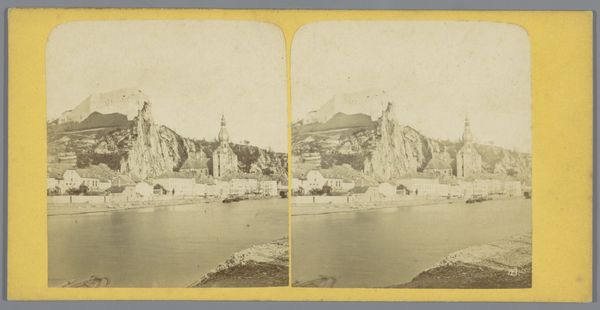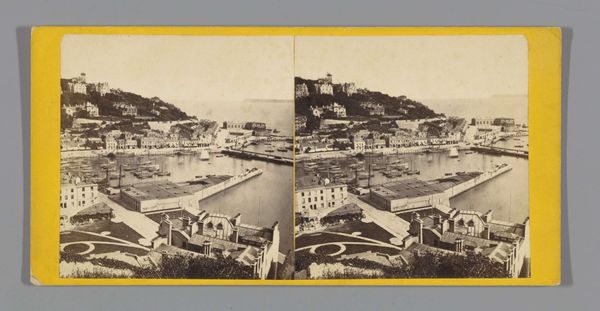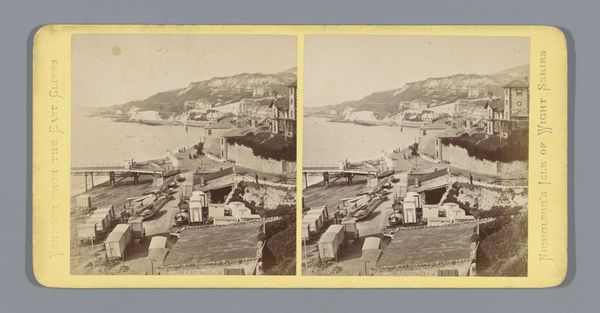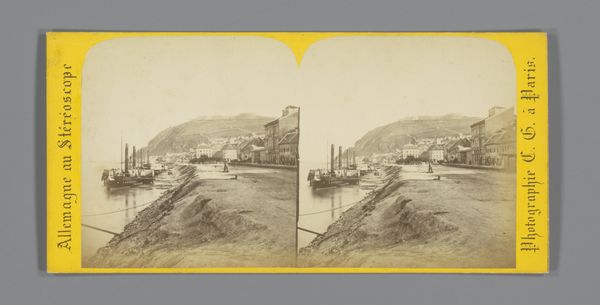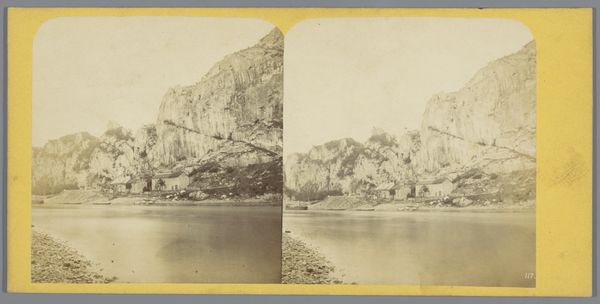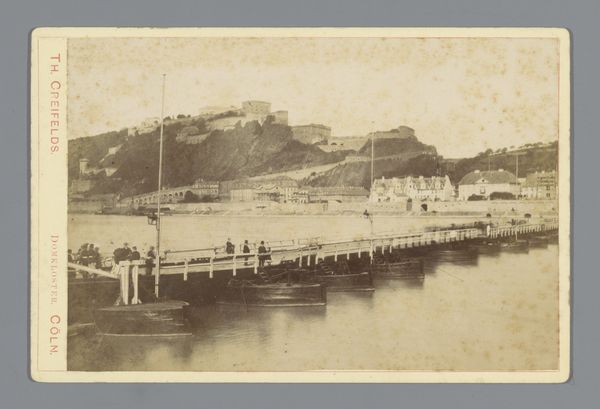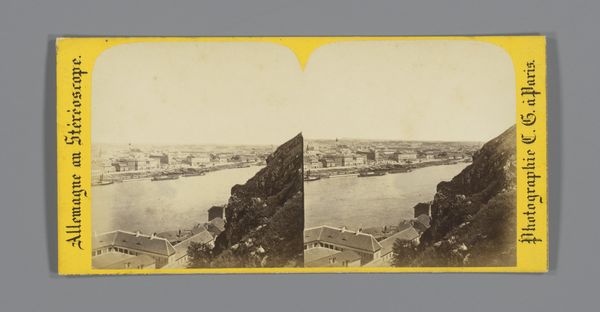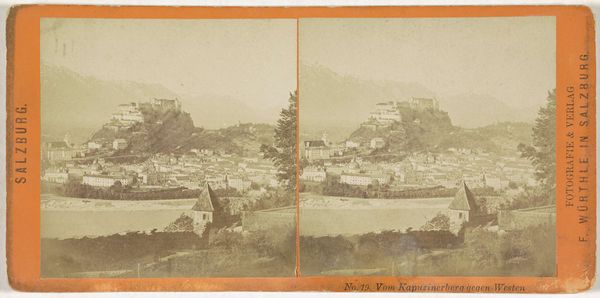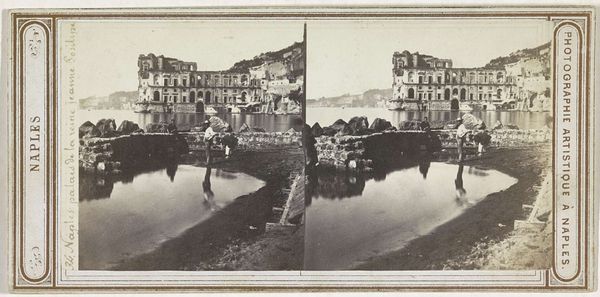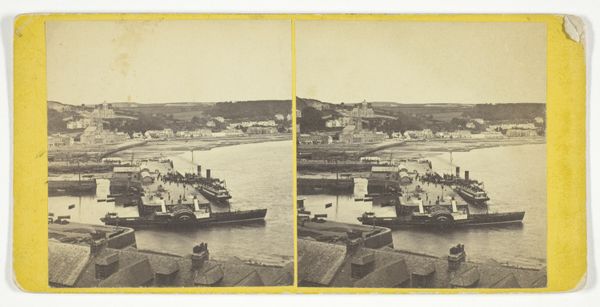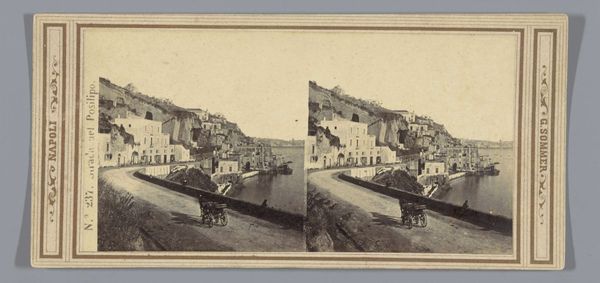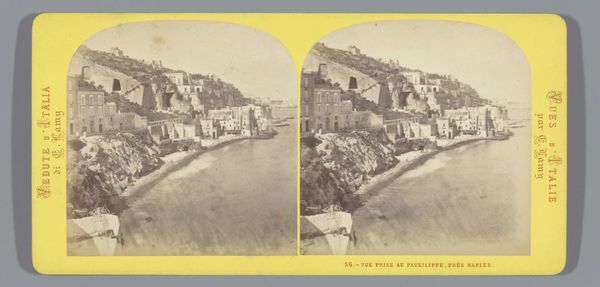
Botenbrug over de Rijn met op de achtergrond Ehrenbreitstein en het fort, Koblenz 1880
0:00
0:00
print, photography
# print
#
landscape
#
river
#
photography
#
coloured pencil
Dimensions: height 86 mm, width 176 mm
Copyright: Rijks Museum: Open Domain
Curator: Anselm Schmitz offers us a stereoscopic card photograph titled "Botenbrug over de Rijn met op de achtergrond Ehrenbreitstein en het fort, Koblenz," circa 1880. Editor: It certainly evokes a somber, almost ominous feeling, doesn’t it? The heavy bridge seems to bear the weight of that imposing fortress looming in the distance. Curator: Indeed. Schmitz masterfully employs leading lines and tonal contrast to direct the viewer's eye through the composition. Observe how the strong diagonals of the bridge draw us toward the fortress, Ehrenbreitstein, creating a dialogue between human-made structure and natural landscape. Editor: That dialogue interests me. This isn’t just a neutral landscape. Fortresses speak of power, control, and often, violent histories. Given the context of the late 19th century, what specific powers and political struggles are reflected in this particular architectural and geographical arrangement? Was the fortress actively suppressing any groups at this time? Curator: Certainly, the photographic medium here offers a very specific objective rendering of spatial relations. What also catches my attention is the textural interplay. Note the rough-hewn texture of the wooden bridge juxtaposed against the smooth surface of the water. Then there's the blurred outline of the town. These material contrasts add complexity. Editor: True, but to understand that complexity, shouldn't we also examine who is depicted—or not depicted—using that bridge? Is it accessible to everyone? Who benefits from its existence and whose movement might it restrict, or who does the imposing architecture survey, creating a sense of control for one group and subordination for another? It may not be clear here, but its absence certainly provokes the question, even in an art form focused on capturing "reality" or landscape. Curator: I concede to the photograph's open-ended question here. Overall, it's the geometric purity in the composition I find impressive about this historical record and photograph, despite its subtle, rather unrefined approach. Editor: Yes, it's fascinating how a seemingly straightforward landscape photograph can subtly raise larger questions about social power and spatial control.
Comments
No comments
Be the first to comment and join the conversation on the ultimate creative platform.
